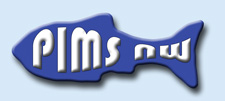|
|
About Apatite II Phosphate-Induced Metal Stabilization (PIMS) is a technology that uses a special material, Apatite II, to clean-up soil and groundwater contaminated with metals. PIMS stabilizes a wide range of metals, especially lead (Pb), uranium (U), plutonium (Pu), zinc (Zn) and cadmium (Cd), either in place or after removal from the ground. PIMS works by chemically binding the metals into new minerals that do not dissolve or leach over geologic time periods, millions of years. After treatment, the metals are no longer bioavailable. This method has many applications in the field including:
- clean-up of Pb-contaminated soil at military bases by mixing a small amount of Apatite II into the soil, as described in PIMS Using Apatite II: Remediation of Pb-Contaminated Range Soil at Camp Stanley Storage Activity, TX (512k PDF) and Particulate Lead Remediation Using Soil Mixing
- clean-up of groundwater contaminated by Cd, Pb, Pu, U and Zn by trenching into the ground in front of the contaminated water and backfilling with Apatite II (called a permeable reactive barrier) that cleans the groundwater as it passes through the material. This can be acid mine drainage from mining activities such as Bunker Hill (see Zinc, Lead, Cadmium and Copper Remediation of Acid Mine Drainage Using a Permeable Reactive Barrier and Soil Mixing), contamination from processing plants, industrial activities, or activities at government sites such as Department of Energy (DOE) sites (see PIMS - Remediation of Metal Contaminated Waters and Soils; and also Uranium and Cadmium Remediation Using a Permeable Reactive Barrier), or Department of Defense (DoD).
- clean-up of U-contaminated soil by washing with bicarbonate of soda and then putting the wash water through the Apatite II to remove the U, as described in Uranium Remediation Using Soil Washing
- clean-up of common non-metal pollutants such as nitrate and perchlorate through the special nature of the Apatite II, as described in Plutonium, Nitrate and Perchlorate Remediation using a Permeable Reactive Barrier
- making hazardous waste into non-hazardous waste ready for disposal by mixing with Apatite II,
- preventing wildlife from being harmed by metals in the soil and water by having Apatite II block the biological uptake of metals from soil, food and water (see Zinc, Lead, Cadmium and Copper Remediation of Acid Mine Drainage Using a Permeable Reactive Barrier and Soil Mixing).
- remediation of lead contaminated soil at small arms firing ranges and remediation of zinc, lead and cadmium from acid mine drainage at Success Mines, Idaho.
- degradation of TNT, RDX, and Perchlorate in multi-contaminant systems like military ordnance impact test areas, military gunnery ranges, old battle field sites, or ammunition repositories (440k PDF)
Download the Apatite II MSDS |







